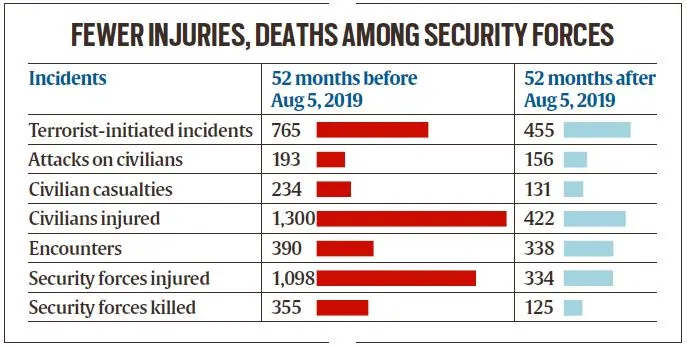PREVIOUS
Supreme Court Verdict on Article 370 – Part 1
March 16 , 2024
664 days
4385
0
(இதன் தமிழ் வடிவத்திற்கு இங்கே சொடுக்கவும்)
Supreme Court Verdict on Article 370
- On 11th December 2023, the Hon’ble Supreme Court of India delivered a historic judgment on the abrogation of Articles 370 and 35A.
- Through its judgment, the Court has upheld the sovereignty and integrity of India.
- The decision was taken on 5th August 2019 to abrogate Article 370.
- It has ended the special status of the erstwhile state of J&K.
- It was done to enhance constitutional integration and not disintegration.
- The Court has also recognised the fact that Article 370 was not permanent in nature.
- A Constitution Bench of the Supreme Court unanimously upheld the power of the President to abrogate Article 370 of the Constitution.
- 370 has granted special status to the former State of Jammu and Kashmir (J&K).
History of J&K’s Accession to India
Pre-Independence
- Under British rule, from 1846 to 1858, J&K was a princely state in a subsidiary alliance with the British East India Company.
- It subsequently came under the British Crown until 1947.
- The East India Company, which had annexed the Kashmir Valley from the Sikhs as war indemnity, sold it to the Maharaja of Jammu, Gulab Singh.
- J&K remained a part of the British Raj but enjoyed its sovereignty.
- It also disallowed outsiders to own properties in the State.
Post – Independence
- During the time of Partition, J&K 's ruler, Maharaja Hari Singh, decided not to side with either India or Pakistan.
- An invasion by tribal militias from Pakistan, backed by that country's establishment, in 1947 made the Maharaja to call New Delhi for assistance in the fight against the invasion.
- The Indian government, led by then Prime Minister Jawaharlal Nehru, agreed to extend help but asked Maharaja to sign an Instrument of Accession (IoA).
- The IoA was signed by Maharaja Hari Singh on October 26, 1947.
- It is agreeing to accede to the newly independent India, but with a significant degree of autonomy.
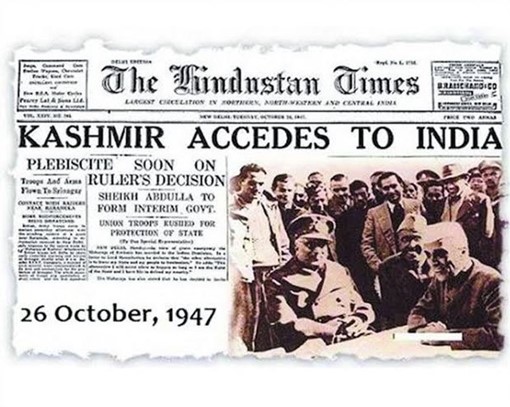
What is Article 370?
- Article 370 in the Indian constitution gave special status to Jammu and Kashmir.
- It was drafted by N Gopalaswami Ayyangar.
- He was a member of the Constituent Assembly of India.
- 370 was added to the constitution as a ‘temporary provision’ in 1949.
- It allowed the state to have its own constitution and flag.
- It was based on the terms of the Instrument of Accession.
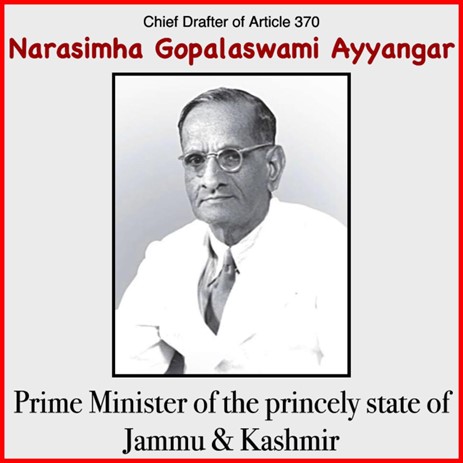
Origin
- Article 370 is derived from Part XXI of the Constitution under the title “Temporary, Transitional and Special provisions”.
Features
- Article 370 gave Kashmir its autonomy in internal administration and in all matters except for 3 subjects - defence, external affairs, and communication.
- Except for Article 1 (India is a Union of States) and Article 370 (Temporary provisions with respect to the State of J&K) of the Constitution of India.
- Other provisions of the constitutions do not apply to J&K.
- Clause (1) (d) of Art 370 empowered the President of India to extend other provisions of the Constitution through an executive order with the concurrence of the government of J&K.
- Article 370 (3) empowered the President to ‘declare Article 370 shall cease to be operative’ completely or partially but only if the Constituent Assembly of J&K recommended such an action.
- The Delhi agreement was signed in 1952.
- It extended the provisions of Indian Constitution regarding citizenship, fundamental rights to the State, in addition to the jurisdiction of the Supreme Court of India.
What is Article 35A?
Origin
- It was inserted as part of the amendments made through a 1954 Presidential order imposed under Article 370.
Features
- It grants the J&K assembly complete freedom to decide or define the permanent residents of the State.
- The permanent resident of J&K has been defined as a person who was a subject of the State on May 14, 1954, or a person who has been residing in J&K for 10 years.
- It allows J&K to confer special rights and privileges to permanent residents in
- Public employment
- Acquisition of immovable property in the State
- Settlement in different parts of the State
- Access to scholarships
- Other such aids that the State government might provide
- It exempts the legislation with respect to permanent residents from being annulled on the ground that they infringe on any of the fundamental rights.
- It also bars female residents of J&K from property rights in the event that they marry a person from outside the state.
- It forbids outsiders from permanently settling, buying land, holding local government jobs or education scholarships in the region.
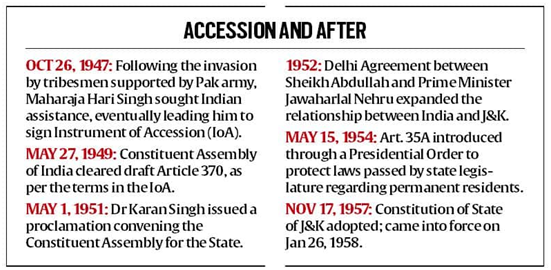
How was Article 370 scrapped?
- Article 367 provides guidance on the interpretation of various provisions of the Constitution.
- It is set out the rules for determining the meaning of words and phrases used in the Constitution.
Constitutional Order 272 (2019)
- It amended Article 367 thereby stating that the reference to Constituent Assembly in Article 370 would mean Legislative Assembly of the State.
- During that time (2019), the State was under the President’s rule.
- Hence the President issued the orders instead of State Legislative Assembly.
Constitutional Order 273 (2019)
- On the recommendation of Rajya Sabha, the President announced the order effectively declaring that the Article 370 would cease to operate.
- Thereby it is applying the provisions of Indian Constitution to J&K.
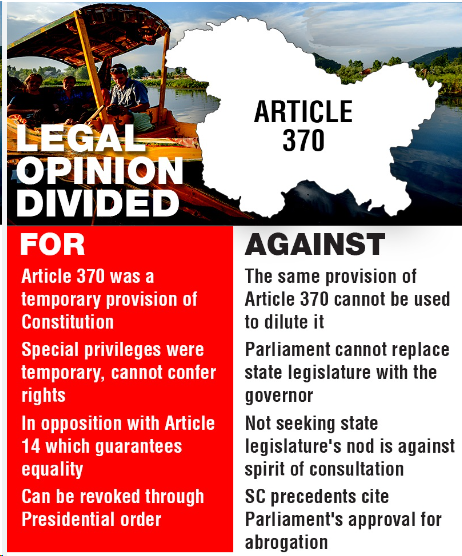
The Key Changes Brought Out by the Order of 2019
Constitution (Application to Jammu and Kashmir) Order, 2019
- The Constitution (Application to Jammu and Kashmir) Order, 2019 has replaced the Presidential Order of 1954.
- Subsequently, the Jammu and Kashmir Reorganisation Bill, 2019, passed by Parliament divides the state of Jammu and Kashmir into two new Union territories, Jammu & Kashmir, and Ladakh.
- This is the first time that a state has been converted into UTs.
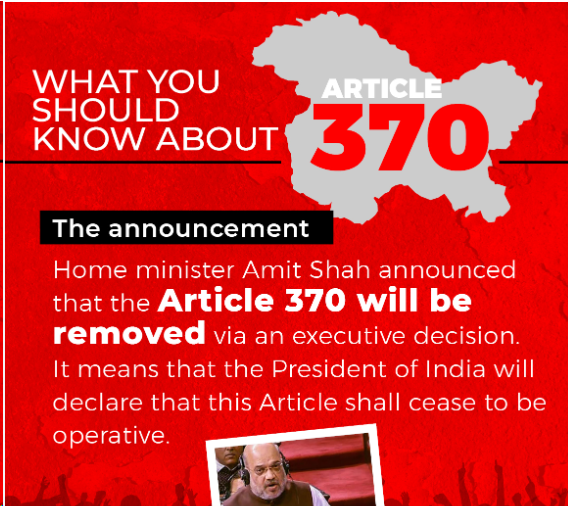
- Of the six Lok Sabha seats currently with the state of Jammu and Kashmir, five will remain with the union territory of Jammu and Kashmir, while one will be allotted to Ladakh.
- The UT of Jammu and Kashmir will have an Assembly, like in Delhi and Puducherry.
- Ladakh will be a UT without legislature.
- Kashmir will no longer have a Governor, but rather a Lieutenant Governor like in Delhi or Puducherry.
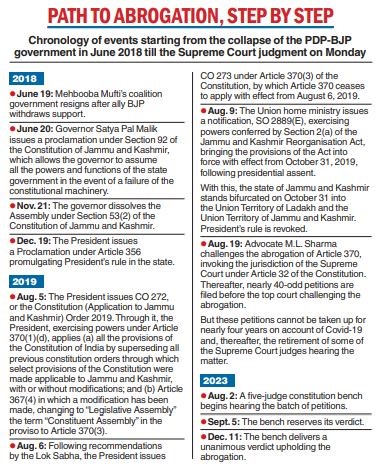
Status of J&K Union Territory
- J&K Assembly will have a five-year term, not six, as was the earlier case.
- Section 32 of the J&K 2019 Bill proposes that the Assembly can make laws on any subjects in the State and Concurrent lists except on state subjects relating to “public order” and “police”.
- This is similar to Article 239A of the Constitution that is applicable to Union Territories of Puducherry and Delhi.
- However, by insertion of Article 239AA and by virtue of the 69th Constitutional Amendment, the Delhi Assembly cannot legislate on matters in entry 18 of the State List, i.e. land.
- In the case of J&K, the Assembly can make laws on land.
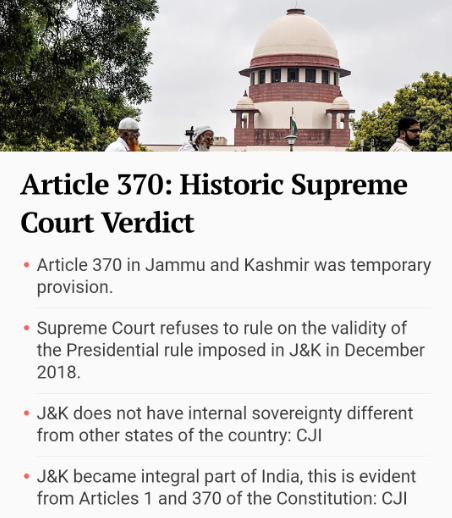
-------------------------------------
Leave a Reply
Your Comment is awaiting moderation.

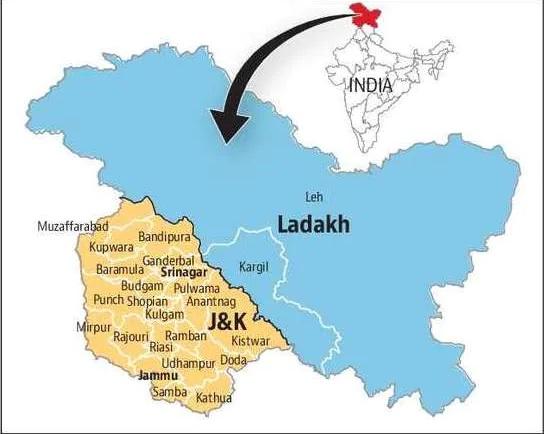
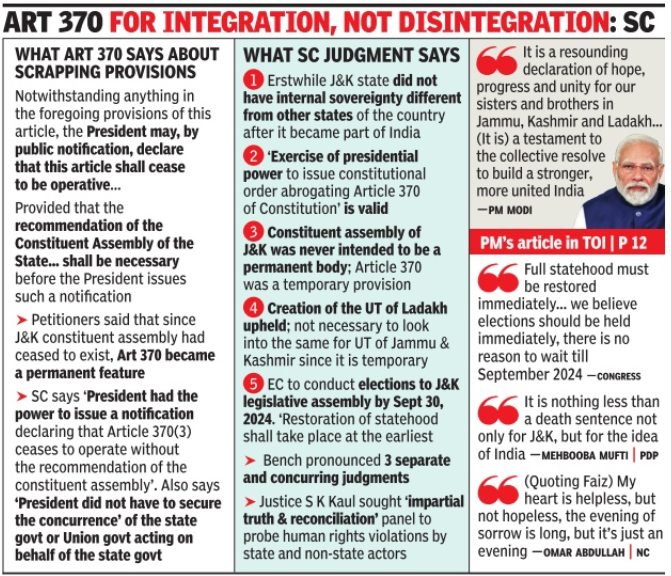
.png)
